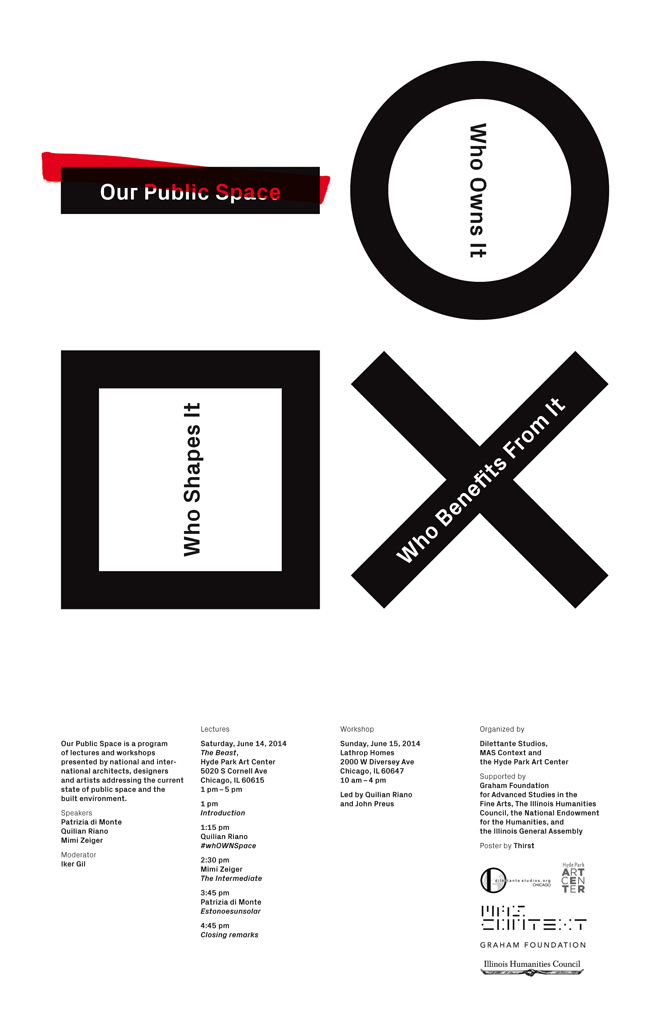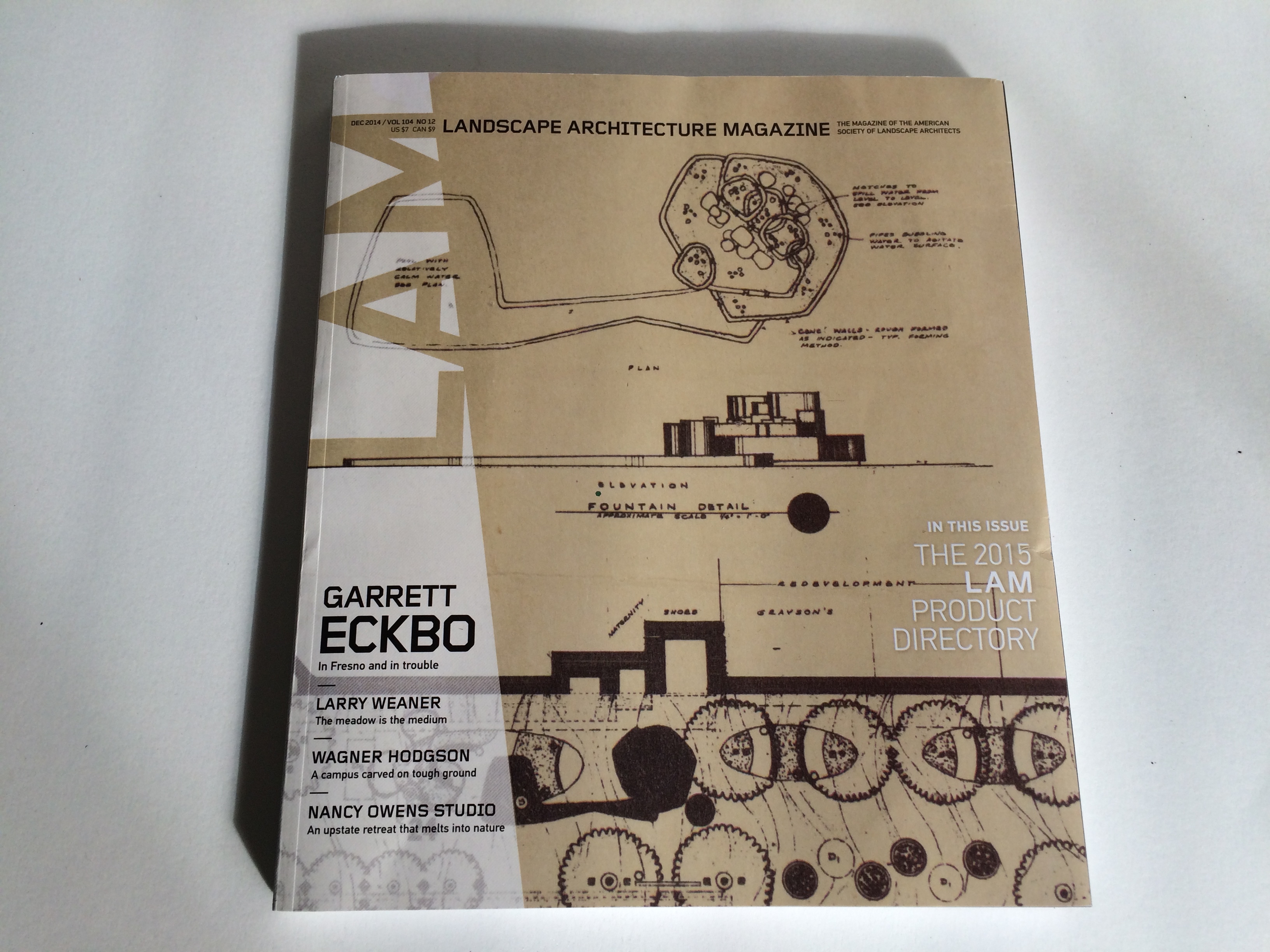“Can architecture serve as a way to reconnect parts of the city or enhance human experience?” asks architect Michel Rojkind, founder of Mexico City–based Rojkind Arquitectos. Although the sharing economy recalibrated how we interface with the city through apps and services, the design of buildings and public spaces are still largely conventional. So, how to design for better civic engagement? In conversation with architect Michel Rojkind, writer Leslie Wolke, and architecture critic Mimi Zeiger will explore recent experiments at the intersection of architecture, interaction design, and urban intervention: from a department store in Mexico City wrapped in a 10-foot-deep layer of programmable hexagonal pods to mobile structures in Madrid that transform historical spaces. What do these urban interventions mean to us as technology and architecture intermingle in unfamiliar ways?
On a hot October evening I stood on the front walk of Greene and Greene’s Gamble House in Pasadena and watched a puppet crane poke his beak through the center of what can only be described as an Arts and Crafts vortex. A nearly 30-foot-wide sculpture hung from the street façade, patterned in a hallucinogenic, Morris-style rose motif. The crane and rose are, of course, the Gamble family crest. Its author, artist Patrick Ballard, calls it The Swirling Mess Below the Sleeping Porch Soon Solidified into a Crest of Phantasmagoric Weight that Creaks Between the Doors, the Floors, and a Form that Could Never Be a House Again. Read More …
Long Beach resident and activist Elliot Gonzalez has been working seven years to get the roof garden atop the public library at the Long Beach Civic Center reopened to the public.
He was twenty when he first hatched his plan. He spied the ruins of terraced lawns, abandoned planters, and open-air concrete bleachers through chain-link fencing. Stairways that once lead to the park were shuttered with steel gates and signs reading “Area Closed,” “Roof Closed,” “Trespassing Will Be Cited.” Read More …
This is a tale about a blob in a park. Or, this is a tale about a blob in a park with a bridge. Or the tale of a blob in a park, a bridge, and a tower designed by LA’s most famous architect. Or, it’s the tale about a city and a blob in a park, a bridge, a tower, a lacklustre sphere, and a subway stop. It’s a cautionary tale.
In late June the Los Angeles County Museum of Art (LACMA) releasedPeter Zumthor’s revised design for its new museum building. His earlier preliminary design, a self-described “black flower” raised some 30 feet above the ground on oversized glass footings, oozed a wee too close to the La Brea Tar Pits that inspired its undulating form. Leadership at the Page Museum, which actively uses the pits for research, expressed concern and asked Zumthor to back off. Squeezed in and smooched out, the new Schmoo-like scheme maintains the approximately 400,000 square feet required to display museum’s extensive collection, but it does so by stretching across Wilshire Boulevard to a piece of property that is currently a LACMA parking lot. Read More …
Let’s get this bit out of the way: Mexico City is dense, Mexico City is colourful, and Mexico City is a place of contrasts. That is to say, in a haze of pollution you can eat tapas on the roof of a boutique hotel designed by Enrique Norton – or scoff down quesadillas on the street, sheltered by a tarp hung between a fence and a lamp post. The city’s famous outdoor markets sell local crafts and produce alongside imported Chinese sundries. Icons of Mexican modernism are tangled in an urban fabric dating back centuries. For a number of young architects, designers, and curators practicing in its colonias (neighbourhoods), Mexico City is more than clichéd observation; it’s an opportunity to refashion the narrative. Read More …
Participant
Organized by Fritz Haeg
A ‘seminary’ is a piece of ground where seeds are sown for later transplantation. It is an environment in which something is propagated, from which something originates. The Los Angeles Seminary for Embodied and Civic Arts takes back this secular and potentially radical meaning. We also take back the word ‘radical’ – going back to the roots. We take back the word ‘sensual’ – treating all of the senses as sources of pleasure but also intelligence. We take back the word ‘embodied’ – to give a body to a spirit. We take back the word ‘civic’ – the activities of people in relation to their local area.
This summer around 10 to 14 of us gather for 12 hours a day, one day a week, for 12 weeks at my home/campus – featuring a resource library, subterranean lounge, workshop garage, wild food gardens, a communal kitchen, picnic tables, lots of little nooks and two geodesic domes – turning inward for an exploration of the embodied arts, turning to each other as a community of fellow artists interested in responding to the world around us, turning outward to pay attention to the city we live in, and ultimately ‘inseminating’ Los Angeles with our civic arts. Read More …

Our Public Space is a two-day program of lectures and a workshop presented by a concise list of national and international architects, designers, and artists addressing the current state of public space and the built environment. This program is organized by Dilettante Studios, MAS Context, and the Hyde Park Art Center and will take place on June 14 and June 15, 2014. With Iker Gil, John Prius, Quilian Riano, Patrizia di Monte, and Mimi Zeiger. Read More …
A few weeks ago at a conference in Mexico City, architect Elizabeth Diller took the stage of the Teatro Metropolitan and presented a series of projects culled from her firm’s growing oeuvre on the theme of the city. She guided the audience gathered in the faded splendour of the vast auditorium through each work — the shrewd Lincoln Center, the precedent-setting The High Line, the upcoming Culture Shed, among others (notably minus the scheme for a supersized MoMA).
Read More …
Conversation recorded between Mimi Zeiger and Leopold Lambert in Los Angeles on April 23, 2014for the Archipelago, the podcast platform of The Funambulist. Read More …
